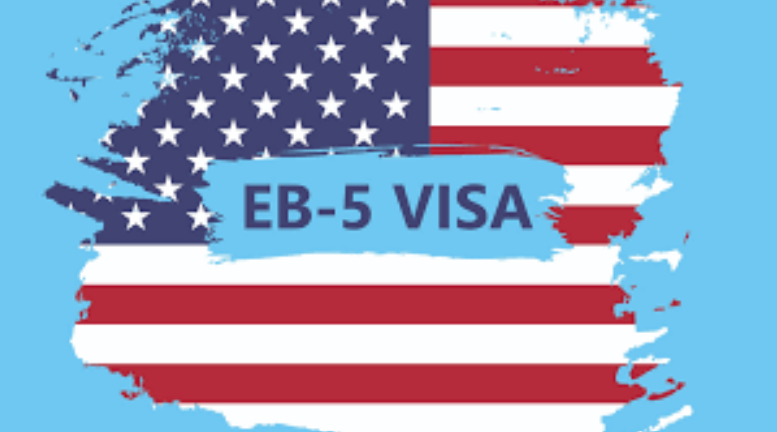Regional Center or Direct Investment for your EB-5 Petition?
Kyle Huffman • August 8, 2024
As the effects of the EB-5 Reform and Integrity Act of 2022 continue to develop, this immigrant visa category has seen skyrocketing popularity in recent months. Prior to 2022, many high-net-worth individuals shied away from the EB-5 category entirely, due to widespread uncertainty around the program. It’s no secret that the EB-5 category is expensive, and who could blame an investor for being hesitant to park such a significant sum of capital into an investment vehicle with limited oversight or transparency? With the vast majority of concerns around the program having been alleviated through the EB-5 Reform and Integrity Act of 2022 provisions, allowing greater regulatory oversight, increasing investment thresholds, transparency, and even removing layers of bureaucratic red-tape, investors are once again eager to participate in this highly beneficial program.
If considering a significant financial investment in the United States, the EB-5 program is an excellent opportunity not only to make the investment, but to secure permanent residency, and eventually citizenship, in the United States for those contributions. The idea behind the EB-5 program is to generate economic stimulation for the United States, including significant numbers of job opportunities being created for U.S. workers. The investment thresholds for the qualifying minimum investment amounts were designed based upon the capital investment achieving a sufficient level of economic stimulation. However, with a large margin between the two qualifying investment thresholds, and a broad array of potential projects to invest in, this leaves many investors wondering which EB-5 pathway is right for them.
In a broad sense, there are two types of EB-5 investment: Direct Investment, or Investment through a USCIS-approved regional center. The best path for each potential case depends on the priorities of each individual applying.
For the direct investment, the petition is filed with form I-526, Immigrant Petition by Standalone Investor. An investor filing an EB-5 Direct Investment Petition has the opportunity to invest in a company that is responsible for creating at least 10 full-time jobs. So long as the organization can verify the actual creation and existence of these jobs, these petitions stand an excellent chance of being approved. These petitions can be particularly beneficial for an investor with a strong belief in the success of a new company or concept and wants the bulk of their investment focused directly on the job-creating company.
For a regional center investment, the petition is filed with form I-526E, Immigrant Petition by Regional Center Investor. These regional centers are created for the express purpose of facilitating EB-5 investment. Each regional center must properly apply with USCIS, and receive approval, before they can be listed by USCIS on the Approved EB-5 Immigrant Investor Regional Centers list. One of the key benefits to investing through a regional center is the facilitation of the application process, because the regional centers will provide a substantial portion of the required documentation. However, this also typically results in a lower level of control over the investment funds, as compared with a direct investment.
For both types of EB-5, the investment threshold is determined by geographic and economic factors within the United States. Because the program is designed to stimulate the U.S. economy, there is a broad preference for investing in what are known as “Targeted Employment Areas (TEAs).” These are either rural areas, or other areas designated as experiencing a high unemployment rate, defined as an unemployment rate at least 50% higher than the U.S. national average. The minimum qualifying investment amount for a Targeted Employment Area is only $900,000, as compared with a minimum threshold of $1.8 million for an investment outside of a TEA. For those investors who are primarily motivated by receipt of a green card, there is not much benefit to investing twice as much capital into a non-TEA, however, for those investors who are confident in a particular investment project and are motivated primarily by potential returns, it may be worthwhile to invest directly into the organization with higher potential, regardless of the geographic location within the U.S. where the investment will be focused.
Ultimately, the decision on which EB-5 pathway is best is a determination that must be made by each individual investor and changes on a case-by-case basis. However, with such a large sum typically at stake, every investor wants to have confidence that they are choosing the best path for themselves to accomplish their individual goals. If you are considering pursuing an EB-5 investment, and would like to discuss questions or concerns you may have around which EB-5 path is right for you, I encourage you to schedule a consultation with one of our skilled attorneys.
This blog is not intended to be legal advice and nothing here should be construed as establishing an attorney client relationship. Please schedule a consultation with an immigration attorney before acting on any information read here.
Kyle Huffman
Similar Posts

The EB-5 Immigrant Investor Visa Program has long stood as a beacon of opportunity for those seeking to establish roots in the United States. However, in recent years, its allure dimmed due to concerns surrounding integrity, program abuse, and uncertainties regarding its future. Yet, with the passage of the EB-5 Reform & Integrity Act of 2022 , the EB-5 program finds itself on the brink of a renaissance, once again capturing the attention of investors worldwide. For those unfamiliar, t he EB-5 program offers foreign investors and their families a pathway to permanent residency in the United States by investing a minimum amount in a qualifying U.S. business venture . This investment must create or preserve a certain number of jobs for American workers. Historically, the program has been popular among affluent individuals seeking not only residency but also the opportunity to contribute to the U.S. economy. However, in recent years, the program faced criticism and scrutiny due to allegations of fraud, abuse, and inefficiencies. Investors became wary, and the program's popularity waned. Prospective applicants were hesitant to commit significant funds to a program plagued by uncertainties and bureaucratic hurdles. Enter the 2022 EB-5 Reform and Integrity Act . This landmark legislation addresses many of the concerns that have plagued the program in recent years. Among its key provisions are increased investment thresholds, stricter oversight measures, and reforms aimed at promoting integrity and transparency within the program. One of the most significant changes introduced by the reform act is empowering the United States Citizenship and Immigration Services (USCIS) to more effectively monitor and investigate potential instances of fraud or abuse. Additionally, the act introduces measures to streamline the application process, reducing bureaucratic red tape and expediting the adjudication of EB-5 petitions, resulting in faster processing for legitimate investments. The passage of the 2022 EB-5 Reform and Integrity Act has injected new life into the EB-5 program, reigniting interest among investors and immigration stakeholders alike. With its enhanced integrity measures and streamlined processes, the program once again represents a compelling opportunity for those seeking to pursue the American dream. Already, we are witnessing a resurgence of interest in the EB-5 program from investors worldwide. Developers and regional centers are seizing the opportunity to capitalize on the renewed enthusiasm, presenting a diverse array of investment opportunities across various industries and regions. Moreover, the EB-5 program's revitalization holds significant implications for the U.S. economy. By attracting foreign investment, the program has the potential to create jobs, spur economic growth, and facilitate the development of communities in need. Furthermore, it underscores the United States' commitment to welcoming and harnessing the talents and resources of immigrant investors. The passage of the 2022 EB-5 Reform and Integrity Act marks a pivotal moment in the history of the EB-5 program. By addressing longstanding concerns and implementing comprehensive reforms, the act has restored confidence in the program and positioned it for a prosperous future. As investors and developers alike embrace the opportunities presented by the revitalized EB-5 program, we anticipate a resurgence in interest and activity, reaffirming the program's status as a cornerstone of American immigration policy and economic development. I encourage any prospective investors to meet with one of our skilled attorneys to discuss the possibility of securing permanent residency, and eventually citizenship, through a qualifying investment under the EB-5 Immigrant Investor Visa Program. We look forward to working with you!

Embarking on the EB-5 immigration journey is both a profound personal endeavor and a strategic investment decision. For individuals seeking to make the United States their new home while contributing to its economic landscape, the EB-5 Immigrant Investor Program offers a pathway unlike any other. This program, established by the U.S. government in 1990, provides foreign investors with the opportunity to obtain permanent residency in the United States by investing in job-creating enterprises . However, navigating the complexities of the EB-5 process requires a thorough understanding of its intricacies, requirements, and potential pitfalls. In this guide, we provide a brief overview of the steps and documents involved in the EB-5 immigration process, shedding light on its key components, eligibility criteria, investment options, and procedural steps, empowering prospective investors with the knowledge needed to embark on this transformative journey with confidence. Before selecting a project and making the investment, it is important for an EB-5 investor to meet with an immigration attorney to strategize for the application. It is required to show the Immigration Service that all funds used in the investment were lawfully earned and retained , so your attorney will want to understand where the money for the investment is coming from and where it has been held since it was earned. Once satisfied with the source and tracing of funds, the investor can select a project to invest in. Following the passage of the EB-5 Reform & Integrity Act, certain investment projects have already been pre-approved by USCIS by filing form I-956 and receiving designation as a Regional Investment Center. The required minimum investment is $1,050,000 by default; however, this amount is reduced for investment centers in “Targeted Employment Areas” to $800,000 . After submitting the investment to the regional center, the investor will then work with their attorney to create the I-526 petition. At this stage of the case, it is time to show USCIS the source and tracing of all of the funds used for the investment. The types documentation required in order to show the lawful source and tracing of funds is extremely broad and highly dependent on where the money is coming from in each particular case, but the most common documents include W-2 or 1099 tax forms, federal and state tax returns, bank account statements, purchase and sale contracts from the sale of real estate, stock certificates, loan contracts, inheritance documents, and wire transfer records, among many other possibilities . EB-5 applicants can either process their green cards through USCIS by filing an I-485 application for Adjustment of Status, or process through the consulate in their home country . If already in the United States on another valid status, the Adjustment of Status application can be submitted concurrently with the I-526 petition. If processing through a consulate overseas, the investor will have to wait until the I-526 is approved before beginning the consular process. The primary applicant, along with a spouse and any unmarried children under 21 years of age are able to receive permanent residency through the EB-5 process. At the completion of either process, whether requesting the Green Card within the United States or seeking entry through a consulate, USCIS will issue conditional green cards, with a validity of two years . Within the last three months before the conditional green card expires , the investor and family will need to file an I-829 application for removal of conditions on the green card. At this stage, nearly two years after the investment has been made, the Immigration Service is confirming whether the investment remains in the project and the requisite 10 jobs have been created . Following I-829 approval, the investor and their family will receive permanent green cards, with a 10-year validity. The investor and family will be able to apply for United States Citizenship five years after the initial green card is issued . The conditional green card does count for this purpose, so citizenship will become a possibility approximately 3 years after the permanent green cards are issued. In conclusion, the EB-5 Immigrant Investor Program stands as a unique avenue for individuals around the globe to fulfill their aspirations of living and thriving in the United States. Through strategic investment and dedication to job creation, participants not only secure permanent residency but also contribute to the nation's economic growth and prosperity. However, it is crucial for prospective investors to approach the EB-5 process with meticulous planning, thorough research, and expert guidance to navigate its complexities successfully . By understanding the program's requirements, exploring investment options, and adhering to procedural guidelines, aspiring immigrants can embark on their EB-5 journey with clarity and confidence. Ultimately, the EB-5 program represents more than just a pathway to residency—it embodies the spirit of entrepreneurship, innovation, and opportunity that defines the American dream. If you believe you may qualify for the EB-5 program or if you have any questions, please schedule a consultation with one of our experienced attorneys and we will be more than happy to assist you.

Once you have connected with a college program, have been admitted to the school, and deemed eligible to compete athletically, you will need to secure an F-1 student visa in order to actually attend your new college and begin your time as a student athlete. The first step in the visa process is to receive your Form I-2

For many talented athletes around the world, U.S. college athletics represent a remarkable opportunity to combine elite athletic competition with higher education. In sports such as basketball, soccer, track and field, and tennis, among others, hundreds of colleges and universities across the United States offer struct

Under the new regulation, if a person filed or files Form I-589, Application for Asylum and for Withholding of Removal after October 1, 2024, and the application remains pending with USCIS for 365 days, the applicant must pay an Annual Asylum Fee (AAF) on the one-year anniversary of his or her filing date.



